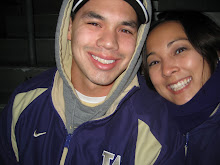As I reflect back on the readings and resources for this course, it is incredible how much I have learned about how to effectively and efficiently integrate technology into the classroom. The skills and resources I have acquired from this course have already begun to significantly improve my instruction. Prior to completing this course, I was familiar with such terms as weblog and podcast, but I had no experience actually using them. This course has provided me with both the skills and the understanding of how powerful and engaging many of today’s web 2.0 tools are for both educators and their students.
Each of the web 2.0 tools that we utilized throughout this course helped me to realize the possibilities available with today’s technology. A strong example of this is the weblog we created. Throughout the past few years, I have used a class website to inform both families and students about upcoming events, projects and enrichment activities. While my website is a great communication tool, a class blog would allow for more of a two-way communication tool in which students/families could post interests, questions or concerns that either I could respond to or other students could support. The group wiki we created in this course is another web 2.0 resource that opened my eyes to what Dr. David Thornburg describes as “doing different things” (Thornburg, 2004). Instead of having my students create individual projects that only the instructor and a couple of students may see, a wiki would allow for my students to share their work on a more global level in which others online could both appreciate and even edit if necessary.
This course has also provided me with a stronger understanding of the specific types of skills today’s students need to be successful. Today’s students enter our classrooms both immersed and absorbed with the latest types of technology. In his article, Digital Natives, Digital Immigrants Part 1, Marc Prensky explains how, “They [students] have spent their entire lives surrounded by and using computers, videogames, digital music players, video cams, cell phones, and all the other toys and tools of the digital age” (Prensky, 2001). This provides educators with both an added level of excitement, but a new challenge to overcome. According to Dr. David Thornburg, today’s students need to be exposed to several types of skills and dispositions including: Information Literacy, Critical Thinking, Problem Solving, Teamwork and Collaboration, Leadership, Communication Skills, Information Technology and Leadership (Laureate Education, Inc., 2008). By having a deeper understanding of many of these types of 21st century skills, I can better engage my students and provide them with the types of skills necessary for today’s competitive workforce.
In order to begin utilizing many of the tools and resources gained from this course, I have set two long-term goals for myself. The first goal I would like to achieve is to switch my class homepage to a class blog. A class blog will provide my students with an opportunity to communicate with both myself and their peers. Students will have access to a variety of resources. Parents will have a much stronger understanding of what their child is studying in school. One of the challenges of achieving this goal is the limited amount of access my district currently has for many blogging sites. In order to overcome this challenge, I have already contacted the technology committee in my school district and requested that they reconsider granting access to different blogging sites for my students to use.
A second goal that I am working on is making the shift from a more direct-instruction approach to a classroom based around lots of student collaboration and team work. It will be important for my students to work together and to share their diverse ideas for approaching different problems. This has been a little challenging in that this type of instruction is very different than the instruction that I grew up with and am used to. I also feel as though I did not receive enough training in my undergrad work and student teaching experience, so this type of instruction is still very new to me.
Overall, this course has helped me to gain a new sense of excitement and enthusiasm for the types of changes occurring within the educational field. I look forward to continue trying out “different things” in my classroom and improving my skills as a professional educator. One of the main reasons I chose this career is because of the different challenges, diversity and rewarding experiences educators are surrounded with each day in the classroom.
References:
Laureate Education, Inc. (Producer). (2008). “Skills for the 21st Century [Motion picture]. Understanding the Impact of Technology on Education, Work, and Society. Baltimore: Author.
Prensky, M. (2001). Digital Natives, Digital Immigrants. On the Horizon, 9(5).
Thornburg, D. (2004). Technology and Education: Expectations, Not Options.
Wednesday, February 25, 2009
Sunday, February 8, 2009
Podcast Assignment: Profiling the Students of Today
Gabcast! Walden #2 - Podcast Assignment: Profiling the Students of Today
This podcast provides information about the types of modern technology that students in my school district are familiar with and using on a daily basis.
This podcast provides information about the types of modern technology that students in my school district are familiar with and using on a daily basis.
Subscribe to:
Posts (Atom)
